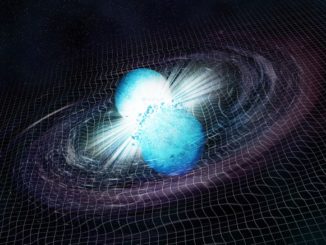
Some of the biggest galaxies in the Universe started to shut down their star-formation from the inside-out ten billion years ago, according to new observations made using the Very Large Telescope in Chile and the Hubble Space Telescope.
The shutdown, around three billion years after the Big Bang, came during a period when, ironically, the Universe in general was reaching the peak of its star-forming activities. The observations of 22 elliptical galaxies show that while the inner 13,000 to 20,000 light years of these galaxies were experiencing an end to their star formation, stars continued to be born in the outskirts of these massive galaxies for up to a further three billion years. Today, elliptical galaxies are known for being ‘red and dead’, alluding to the fact that only ancient, cooler, redder stars survive in them and no more star formation takes place.
The findings, published in the 17 April edition of the journal Science, bolster the theory that it was powerful winds of radiation blown outwards from the central supermassive black holes in elliptical galaxies that prevented the galaxies from forming new stars. The winds, measured in previous observations to be racing away from the galaxies at velocities of up to 1,500 kilometres per second, would heat and blow all the cold hydrogen gas used for forming stars out of the galaxies.
“A supermassive black hole in the centre of a galaxy can drive out strong and rapid winds that led to the suppression of star formation, since it leaves no gas available for new stars,” the lead authors, Marcella Carollo and Sandro Tacchella, of ETH Zurich in Switzerland, told Astronomy Now. “This is consistent with our inside-out progression of the cessation of star formation.”
An alternative to the wind scenario is that of clouds of intergalactic gas, perhaps leftover from the galaxy-forming process, no longer falling onto these galaxies, therefore starving them of star-making fuel. In this scenario there would also be an inside-out pattern, as the centres of the galaxies would be starved first. However, ‘feedback’ from the black hole wind, caused by matter gathering around the black hole and then being funnelled away by magnetic fields, is still the leading theory. For instance, in March astronomers studying data from the European Space Agency’s Herschel Space Observatory were able to observe winds from a black hole in a distant galaxy interacting with that galaxy’s gas. So while the black hole wind model is not yet a certainty, there is increasingly strong evidence for it.
Say Carollo and Tacchella, “[Our observations] do not prove that these winds are indeed the main cause for the suppression of star-formation in these galaxies, but it is certainly an intriguing possibility.”



